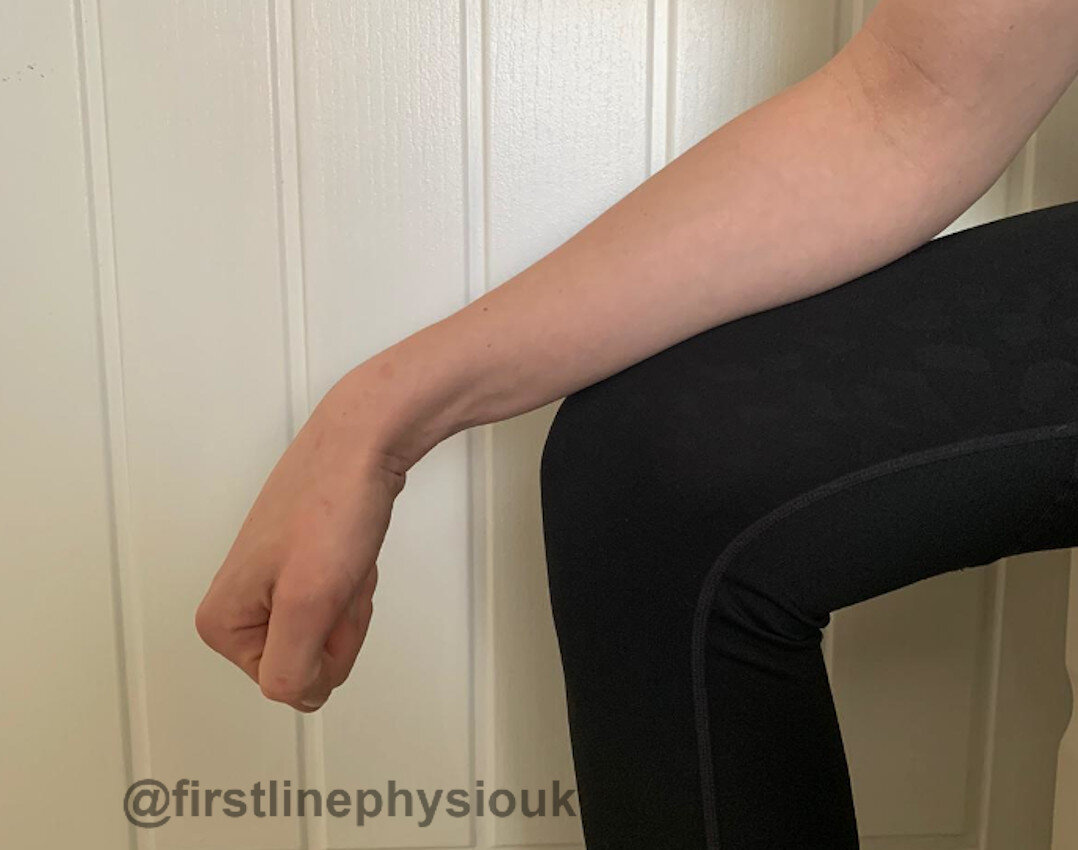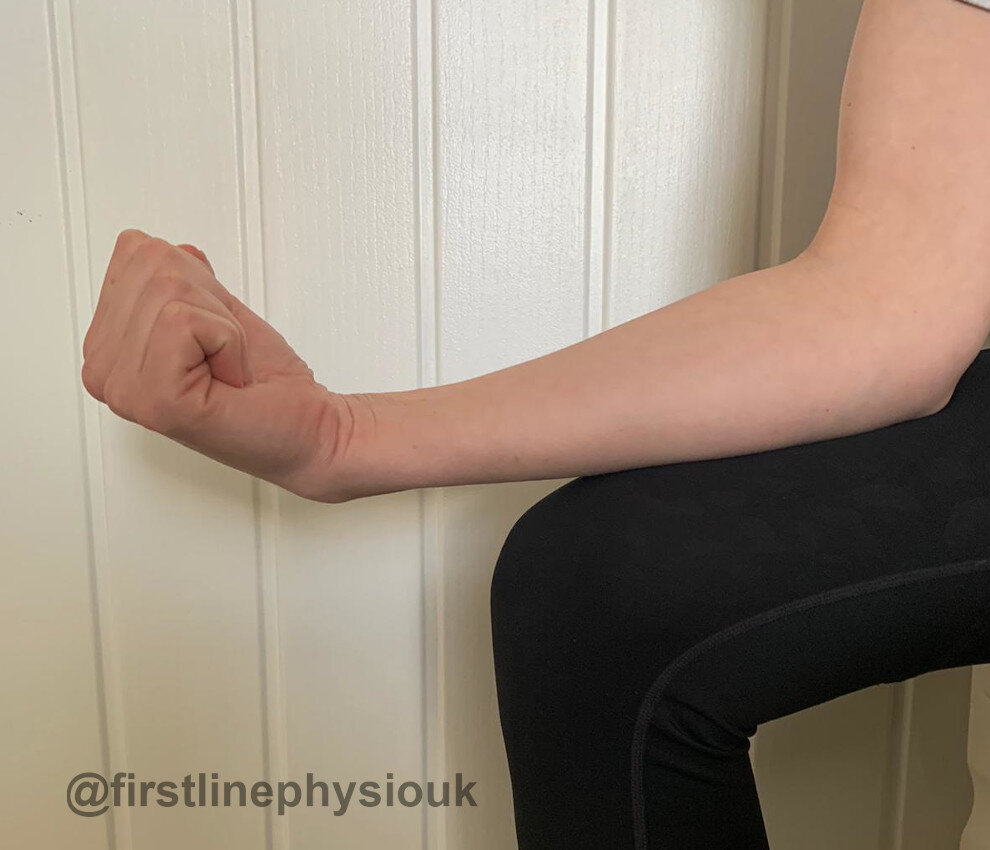Why does my elbow hurt when gardening?
Gardening involves a lot of repetitive movements of your arms as you lift, chop and trim. This means there is a chance of developing overuse injuries of the muscles around your elbows. Here we discuss the main two culprits, tennis and golfers elbow, 3 “quick wins” to help improve pain and the best rehab exercise.
The elbow is made up of three bones. The radius and ulna are the bones in your forearm, and the humerus is your upper arm bone. The lower part of your humerus has two bony bumps either side of it, called epicondlyes.
You have an inner (medial) and an outer (lateral) epicondlye. Muscles of the forearm attach into these bumps via tendons.
What is Tennis elbow?
This is a condition that causes pain on the outside of your elbow. Despite the name, less than 5% of tennis elbow diagnoses are related to tennis!
Badminton, squash and throwing sports can also cause tennis elbow. We have seen it in people who do a lot of painting, decorating, DIY work, assembly work, cleaning, computer work and gardening tasks.
Tennis elbow is caused by overuse of the muscles in the back of the forearm. These muscles are called the wrist extensors. They pull the top of your hand back towards your forearm and attach to the outer part of your elbow.
What about Golfer’s elbow?
This condition is much less common but can still be a risk for gardeners. Golfers elbow is caused by overuse of the wrist flexor muscles, on the palm side of your forearm. These attach to the inside of your elbow. Overuse causes pain in this area.
Golfers-Elbow by Scientific Animations is licensed under CC BY-SA 4.0
These muscles are involved in gripping and making a fist. Again, golf is just one of the activities that can cause this condition. All of above can also cause Golfer’s elbow.
Several jobs in the garden can lead to excessive strain on the tendons around the elbow. Heavy lifting, digging, using garden shears and weeding can all be repetitive. You may be lucky and get away without injury if it is just a day or two of gardening. You may just experience a few days of elbow pain which improves with rest.
However, if there is repeated stress on these tendons over a period of time, this can cause chronic issues, microscopic tears and degeneration (“wear and tear”) in the tendon.
These tasks can also put strain on your shoulders, and we have discussed the shoulder problems that may occur from gardening in our previous blog.
Tendinitis or tendinosis?
It used to be thought that there was inflammation from the microscopic tears in the tendon, and so this was called tendinitis (itis = inflammation). However, we now know that inflammation is only present in the very early stages of the condition (0 - 72 hours). Beyond this, there is actually an absence of inflammation in tennis and golfers elbow and the problem comes from a failed healing response.
The microscopic tears in the tendon kick starts the body’s healing process, which starts by making and laying down a protein called collagen. This is what makes up a large proportion of our tendons.
Collagen tends to be laid down in a random fashion at first, so the tendon is weaker than it should be. The collagen needs to become aligned in order for the tendon to be strong, and this takes time. There is also decreased blood flow to the tendon, which causes further weakness.
If, during this process, you continue with the aggravating activity, the tendon is unable to repair itself and begins to wear down. This is know as tendinosis, or tendinopathy.
3 quick wins for tennis or golfers elbow
There are a few quick wins you can try to improve elbow pain. These may be all you need to do to resolve the pain, especially if it is a new problem. If you start feeling pain on the inside or the outside of your elbow, try these.
1. Avoid aggravating factors
The easiest way to improve this condition is REST. It can sometimes be hard to work out what has triggered tennis/golfers elbow, as often the elbow does not start hurting until hours after the activity.
Think back over the last 48 hours to anything that has involved a lot of lifting, carrying or repetitive movements of the wrist and forearm. Sometimes this can even be computer work. Try as best as you can to avoid any of these activities for the next few days.
These conditions tend to be more common in the dominant hand. Try using the other hand for a couple of days for tasks like carrying and lifting to give the affected elbow a rest (this is not always possible!).
2. Ice
Ice is helpful to relieve pain and inflammation. As mentioned above, inflammation is only present in the early stages, but ice can be good for temporary pain relief.
Grab a bag of frozen peas, wrap them in a damp tea towel and put it on your elbow for up to 10 minutes (less if it makes the area numb). You can use ice a couple of times a day if it is helpful for pain.
We talk more about how ice works and how you can use it in our previous blog.
3. Elbow strap
Elbow straps are a really popular way to aid the treatment of tennis and golfers elbow. They reduce the forces going through the tendon, and so allows the injured tendon time to recover.
These are especially good if the activity that has caused the problem cannot be avoided easily, for example, when it is linked to your job. It is important to wear the strap anytime you are completing any activity which aggravates your elbow pain. For some of you with more severe symptoms, this may be most of the time.
Wearing a support strap should help your pain pretty much immediately. If it doesn’t, it may be because you have not put the strap on correctly. You may have not tennis/golfers elbow as there are other conditions that can cause pain in this area.
Please consult a physiotherapist about this as they will be able to assess your elbow and give you a clear diagnosis.
If you don’t already have one, we recommend the Bracoo EP40 Tennis Elbow Support Strap - see the link to buy from Amazon.
*This is the equipment that we use and recommend fully. You won’t pay a penny more, but First Line Physio will earn a small commission if you purchase the equipment following this link. This contributes to the running costs of the blog.*
Tennis elbow rehab exercise
Although the above may reduce pain short term, it will not help repair the damage in the tendon if it is a long term problem. Exercise is vital for this purpose. There are lots of different exercise programmes out there for tennis elbow, and it can get confusing knowing where to start.
The number one focus of your exercise programme should be to STRENGTHEN your muscle in a controlled way with minimal pain. This is because the stress through the tendon will help produce more collagen and help it to align.
Eccentric strengthening
Eccentric means lengthening of the muscle under tension. Imagine bending your elbow with a weight in your hand, then slowly straightening your elbow. By doing this in a controlled way, and not just letting your arm flop down, you are completing an eccentric contraction.
This is exactly what we need to do for your elbow! Eccentric strengthening has been found to be an effective treatment for tennis and golfers elbow. Make sure that you do not wear your elbow strap for these exercises, as you want to create controlled load through your tendon.
Strengthening wrist flexors/extensors
Sit and rest your forearm on a table, the arm of a chair or your thigh. Your wrist and hand should hang off the edge.
For tennis elbow: Palm down
Bend your wrist backwards so that your hand moves towards you.
Then, to the count of 5, slowly lower your hand and bend your wrist back to where you started.
Aim to complete this 20 times, once a day.
For golfers elbow: Palm up
Bend your wrist forwards so that your hand moves towards you.
Then, to the count of 5, slowly lower your hand and bend your wrist back to where you started.
Aim to complete this 20 times, once a day.
You should be expecting some pain with your exercises, as this is a sign that the tendon is under some stress. However, this needs to be a MILD STRESS ONLY. If 0 is no pain and 10 is the worst pain imaginable, your pain during these exercises should be 3/10 at a maximum.
More pain than this tends to be bad sign and you may be doing more harm than good! You may want to start on a small number of exercises and build it up slowly as you get stronger and your elbow becomes less irritable.
If your elbow is sore for longer than 30 minutes after you have completed the exercises, this is a sign that it is too much for the tendon at this time. Reduce the amount you are doing and slowly build up to 20 as your pain allows you to.
If you are able to complete 20 of these every day with no pain, then you are ready to progress!
You can do this by adding a weight to your hand to make the exercises harder.
Keep this light at first - try a quarter full 750 ml bottle of water. This way, you can slowly increase the weight by adding more water to the bottle, or decrease it if the exercises become too painful.
Complete the exercises in the same way as above, focusing on a SLOW lower.
Aim to get to 20 times, once a day. Once this is achievable without pain, increase the weight and continue.
Exercise progression for tennis elbow
Exercise progression for golfers elbow
Remember if you have had a busy day doing things that aggravate your elbow, such as housework, gardening, or computer work - you may want to do less repetitions on these days so as not to overwork your tendon.
You should start to feel improvements in your pain and strength within 6 weeks. If not, it is time to go and see a physiotherapist! There are other causes of forearm pain which your physiotherapist can address for you and you may need other exercises to stretch or strengthen other areas of your arm.
This is absolutely not written to substitute medical advice and it is always important to see a qualified health care professional for a formal diagnosis. If any of the exercises cause excessive pain during or after the exercise, discontinue and consult a physiotherapist.
If you would like to get in touch please visit our contact page.
*We are a participant in the Amazon Services LLC Associates Program, an affiliate advertising program designed to provide a means for us to earn fees by linking to Amazon.com and affiliated sites










